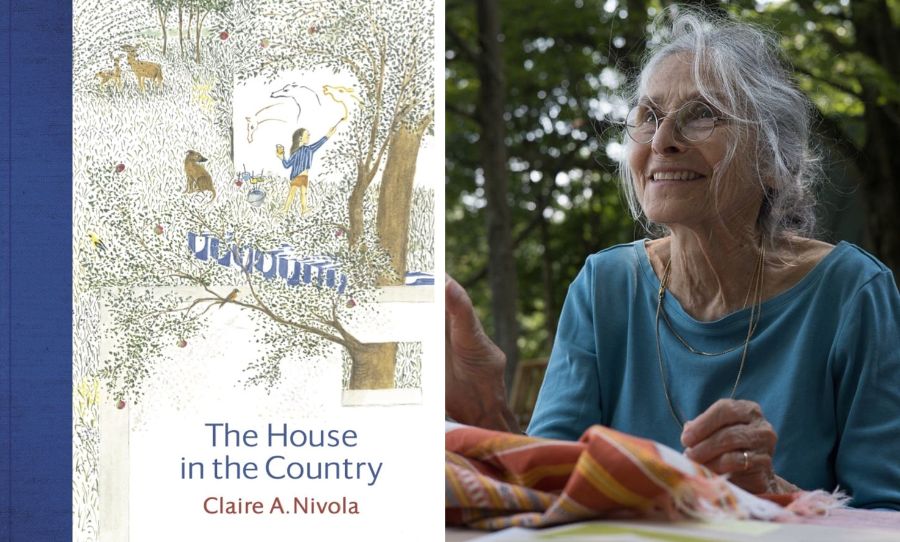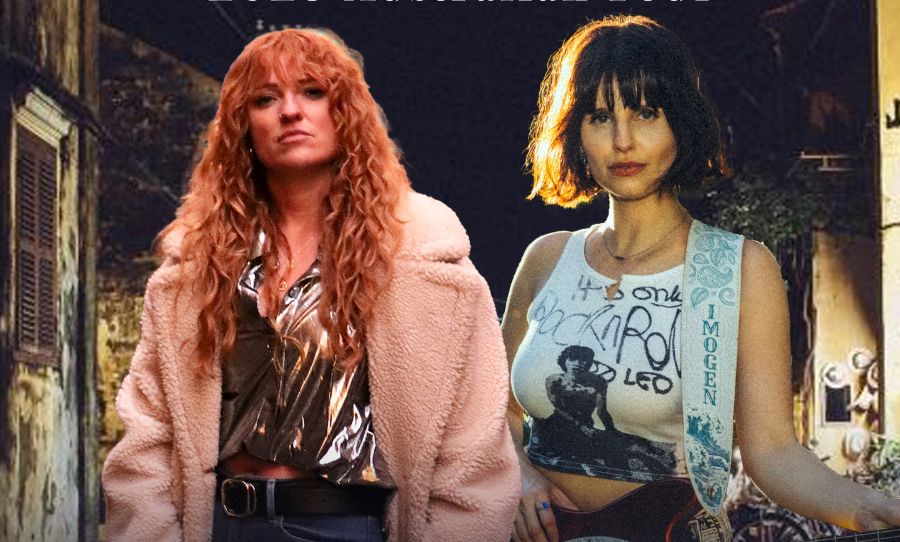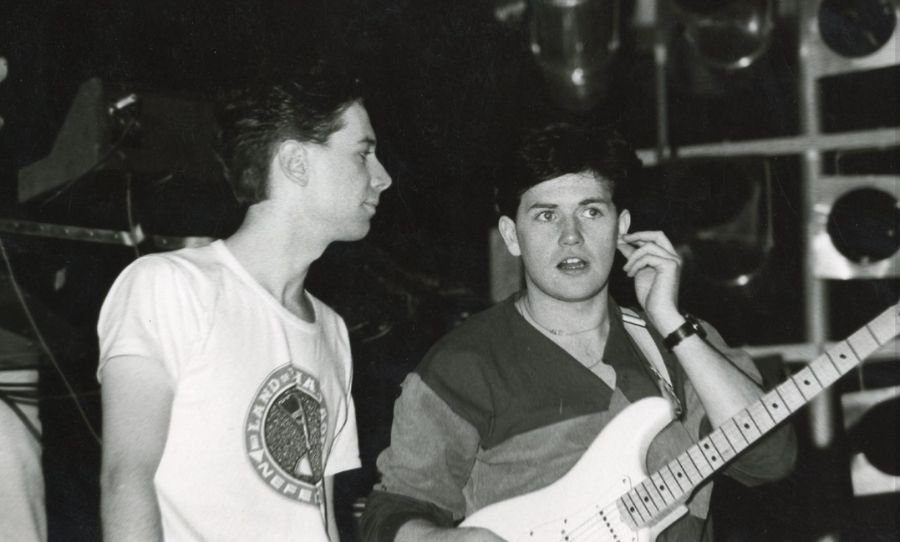In “The House in the Country,” Claire A. Nivola seamlessly weaves together family, art, and memory.
A24, celebrated for its groundbreaking films and thought provoking, strikingly original children books, introduces the illustrious gem “The House in the Country” to the world, following the success of Claire’s earlier work, “Star Child,” which enchanted readers on the silver screen in “C’mon C’mon.”
Step into a world where art, creativity, and life converge, as Claire’s illustrated memoir becomes a cherished testament to family days and an inspiring immigrant story.
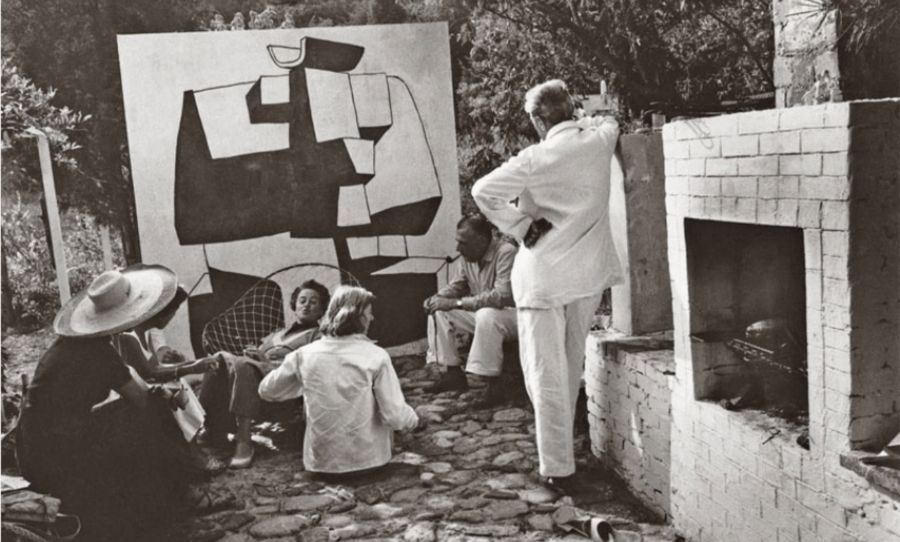
Embracing the vibrant creativity of the 20th-century New York art scene, Nivola’s artistry takes readers on a captivating journey to the Nivolas’ bohemian home, where luminaries like Marilyn Monroe and Willem de Kooning graced the sanctum.
In an intimate interview, Claire A. Nivola shines a light on the creative process and inspiration behind her beautifully illustrated memoir, “The House in the Country,” even as she recovers from a minor back injury. Her unique upbringing comes to life, enriching her art and storytelling with profound depth.
“The House in the Country” stands as a heartfelt love song to the past, embracing simplicity, nature, and the beauty of everyday life. As Claire shares her experiences with famous artists, delves into the art world’s insights, and embarks on her own artistic endeavours, readers glimpse a world where creativity knows no bounds.
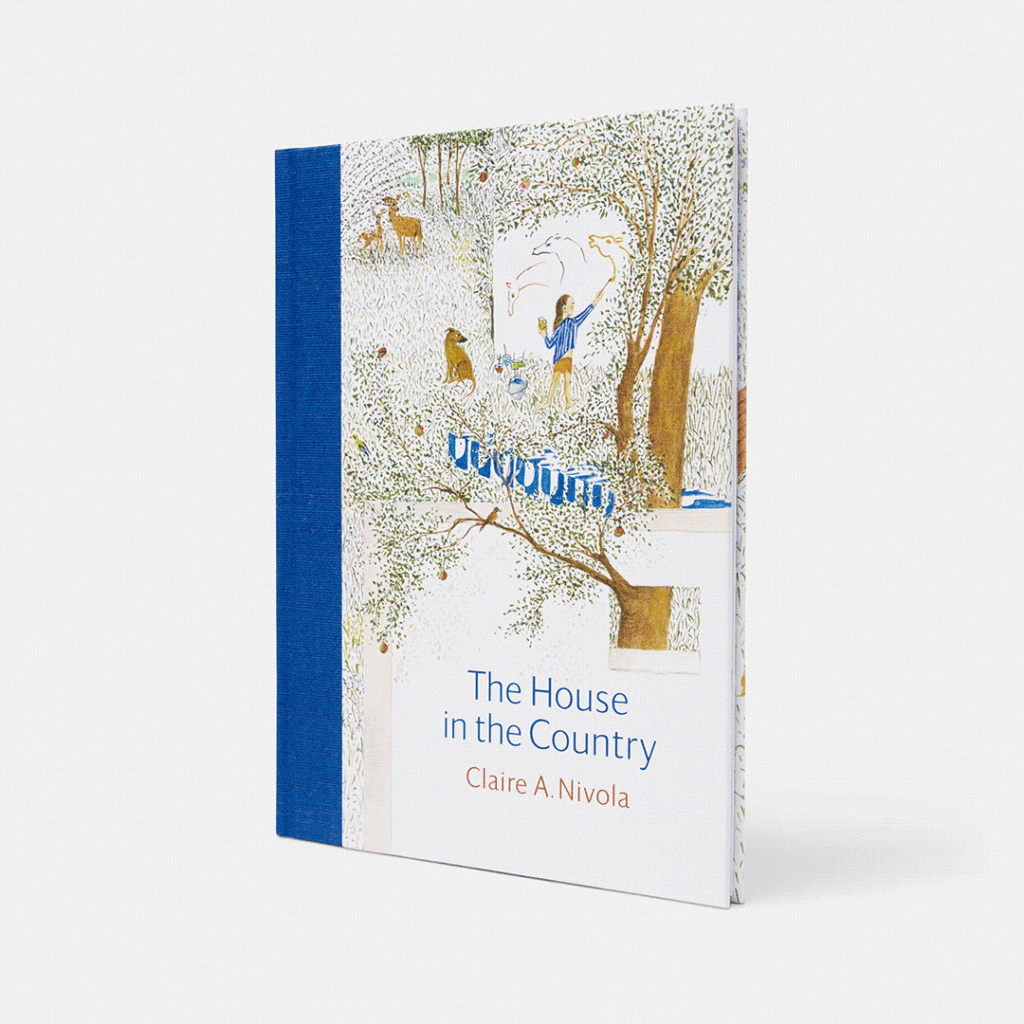
Happy: What are you up to today?
Claire: At the moment I am recovering from a back injury, waiting and waiting for the body to heal.
Not “up to” much!
Happy: Tell us about where you are from? What’s the scene like?
Claire: I was born in New York City of a Sardinian father (Italian) and a German Jewish mother.
Right now I’m in northern Vermont, a far cry from Manhattan. The scene is green, green, green thanks to excessive rains – the local manifestation of the terrifying heating of the planet – Climate Change – which is upon us all.
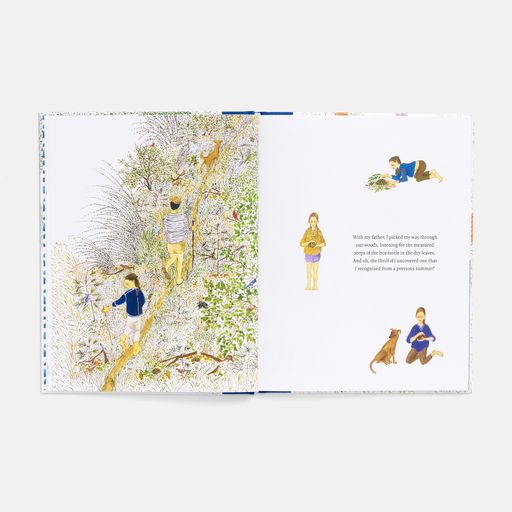
Happy: What did you read or watch growing up that fuelled your passion for writing and illustrations?
Claire: Very little “watching” – no TV in the house – until I was old enough to go to movies (the golden age of films, 1950s and ‘60s!). But there were books, books that were read to me mainly by my mother, and books that I read myself, pictures that I pored over.
There were the classics of children’s literature such as Alice in Wonderland, Pinocchio, Wind in the Willows, Winnie the Pooh, the Babar books, the Madeline books, Dr. Doolittle, The King Arthur tales, the Jungle Books, Dickens,etc. etc.
I pored over illustrations but also over images in other books, pictures of animals, etchings of Medieval medical practices, anything – therefore the image in my story of the porch with the bookshelf from which I could draw down any book.
Happy: Claire, as the author and illustrator of The House in the Country, could you share what inspired you to write and illustrate this book?
Claire: My terrible sense of loss when the house was changed, when it was no longer what it had once been, drew out of me this love song to that past.
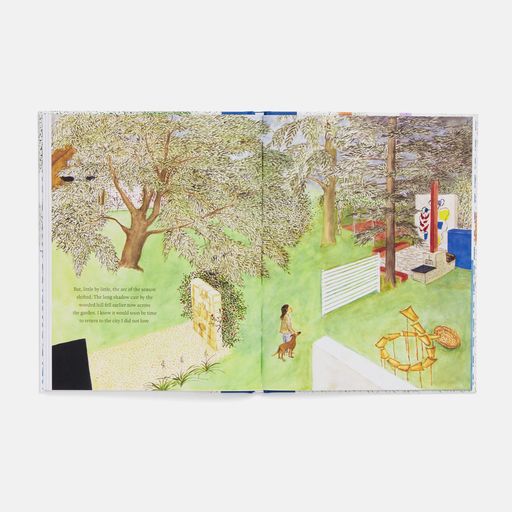
Happy: How do you feel The House in the Country contributes to your father, Costantino Nivola’s legacy, and the 20th-century New York art scene that he was a part of?
My father wasn’t really part of what was going on. He was not one of the artists anointed by the critics who created the legend of the NY school – “Abstract Expressionism” – and who created the intoxication of prices and ‘values’ which has made the art world the inflated arena of speculation that it is today.
Saul Steinberg, probably the greatest talent in that pool of artists, was passed over because his work did not fit the mold created by the critics, themselves intoxicated by their power to make or break careers.
My story does not contribute to my father’s legacy, but it may give a sense of his Life-as-an-artist as genuine, ‘creative’ in every facet of life – home, garden, work, cooking. My parents practiced the Art of Living, as opposed to tortured lives that produced paintings that might sell for a fortune.
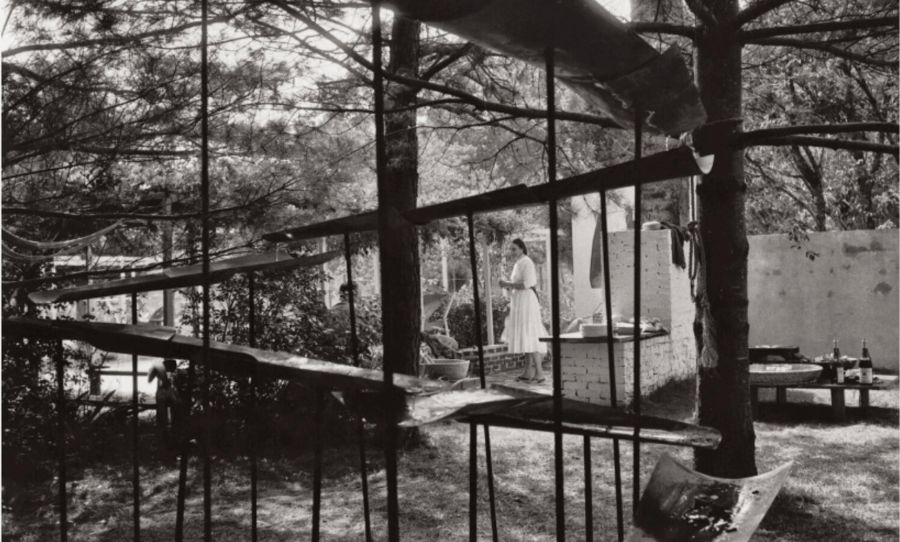
Happy: Growing up in a bohemian Long Island home surrounded by influential artists, how did that unique upbringing shape your perspective on art and creativity?
Claire: I think I developed a very clear sense of what was genuine and what was part of this pumped-up cultural moment where art and money got entangled. Sandy Calder, whom my father knew, and I hardly at all, was the Real Thing – playful, work and play entwined and pouring out of him. Steinberg was like that.
Their studios looked like them. The artists who were producing just stripes or solids or drips because that was what the market expected of them were, as my father astutely observed, drinking themselves to death out of boredom at producing the same thing again and again.
People are always amazed that I knew famous artists but to me there was nothing romantic about that scene or them or that period in our culture.
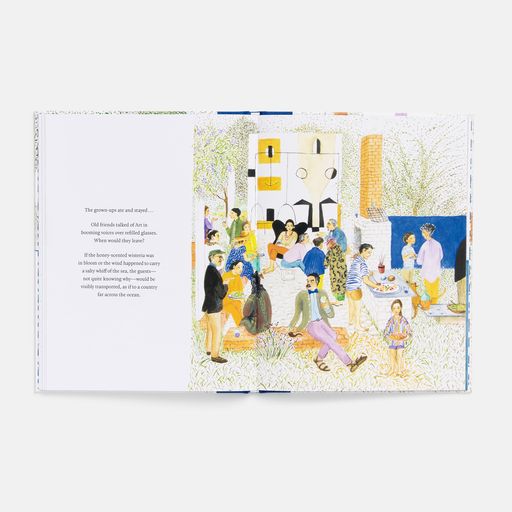
Happy: Can you share any specific ways in which your experiences and interactions with artists like Marilyn Monroe, Willem de Kooning, and Jackson Pollock influenced your own artistic journey?
Claire: I was not influenced in any way by these experiences and interactions.
I met Marilyn Monroe briefly when I was eleven. She was married at the time to playwright Arthur Miller who was the father of my best friend in school, Bobby Miller. They came across the street where they had been visiting to meet us – my father and brother were of course wowed, but my only interest was in Bobby and I took him off to show him around the garden.
I never saw Marilyn Monroe vaguely drop and shatter her wine glass on the stone patio my father had built – the one shown in the garden scene in my book – an event which made an impression on all present.
Pollock drove drunk into a tree and killed himself and an innocent passenger when I was too young to remember. He gave my father a painting once (artists exchanged paintings freely in those days before they were famous) and my father returned it to him a few weeks later claiming that his children and wife had all been arguing and fighting ever since the painting was hung.
We have a photo of my brother and me sitting under the painting looking very sour and irritable. That painting is now at MoMA and considered a pivotal painting in Pollock’s development. Our family never regretted giving it back.
Willem de Kooning is a different case. He and my father had a natural affinity and I liked him enormously. He was very handsome and utterly charming. But he too was a tragic alcoholic. His work certainly never influenced me one way or another, but I thought he was a genuine artist and a victim of the monumental fame that overtook him and confounded him.
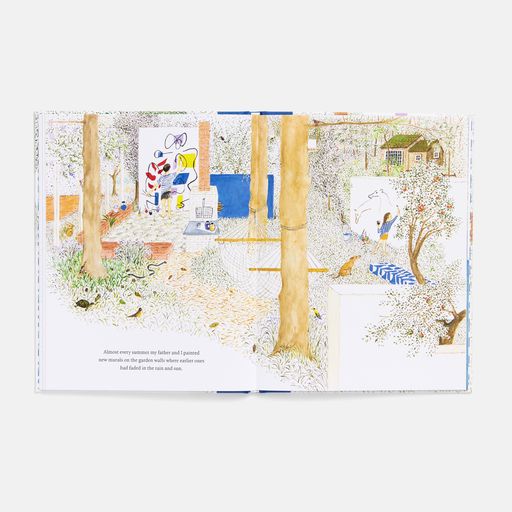
Happy: In what ways did being raised in such a creative environment impact your decision to become a children’s book author and illustrator?
Claire: My father thought that illustration was a lesser art, but I may well have gravitated towards it just because it was NOT part of the crazed world of Artists with a capital “A”, reviewers, exhibitions, openings, gallerists, collectors, and investors.
More than that, I loved stories and I liked to write. It was an extension of what I had always loved to do.
Happy: Can you tell us where you currently reside and how that environment contributes to your creative process?
Claire: I live in Newton, Massachusetts. I grew up in Manhattan but I never made use of the fact that the city ‘never sleeps.’
I have wanted to live in a place that did shut down at night and grew quiet, a place with nature (a lake and a wooded park), where I wouldn’t be dependent on a car (we bicycle and use public transportation) and where the schools would be good for my children back when they were going to school.
Where I live suits me and therefore allows me to work…
Happy: Has the bohemian atmosphere and artistic legacy of your childhood home influenced your choice of residence or the community you surround yourself with today?
Claire: Not really. I have never sought out the company of “artists” any more than any other category of person. But the ‘way’ I live – simply, and caring about the beauty of my surroundings, creating those surroundings myself, is entirely the result of the values I learned from my childhood: nature, family, simplicity, the aesthetics of everyday life.
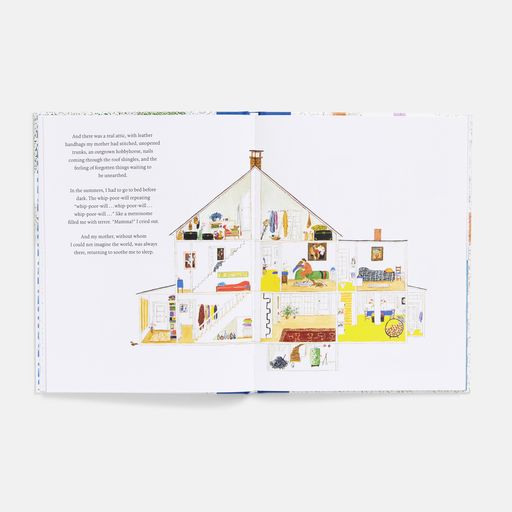
Happy: Are there any specific messages or life lessons you aimed to convey to young readers through The House in the Country?
Claire: The book is an expression of gratitude for a childhood and family, a place and way of life that was rich and made me, in many ways, who I am.
Some seven decades later, readers may notice a childhood very different from the structured, activity-filled childhoods of today. This is not why I wrote the book, but they can draw their own conclusions. Summer vacation was 3 full months long and boredom was the “mother of invention.”
There was no technology to plug into. Cars didn’t always start when you turned on the ignition. You didn’t wear seatbelts and could dangle your legs out the back of a station wagon while it was driving. No one entertained my brother or me.
We were simply included with the adults in whatever they were doing, not segregated off to ‘child-friendly’ activities. My parents made no distinction between work and play; I helped to sweep and clean but I also was offered a whole wall on which to paint a mural!
Happy: What makes you happy?
Claire: Feel free to draw your own conclusions!
Head over to A24 to read more and purchase ‘The House in the Country”
